Economic evaluation and competitive characteristics of ostrich breeding
There are a lot of factors that contribute to any food’s health benefits and risks, including fat-to-protein ratio, nutrient density, digestibility, and – when it comes to animal proteins – the animal’s diet and the part/s consumed. Red meat often gets a bad rap, due to clinical studies linking overconsumption to health issues such as heart disease, type 2 diabetes, and certain cancers. It’s important to understand, however, that not all red meats are created equally, and as with anything, moderation is key.
One of the reasons ostrich is widely considered a healthier meat than beef or pork is its comparatively low fat content. Plus, the fat found in ostrich meat is primarily unsaturated. Unsaturated fat is considered beneficial fat that can actually improve blood cholesterol levels, ease inflammation, and help to stabilize heart rhythms. While all animal proteins contain some amount of saturated fat (the type that can build up in your blood vessels), a portion of ostrich contains only about 10% of the recommended daily value of saturated fat, whereas the same size portion of beef generally contains more than 35% of the daily recommended value.
Fat content is just one aspect of the nutritional profile of ostrich, and we are often asked how it compares to beef, bison, wild game like deer and elk, as well as other forms of poultry, including turkey and duck.
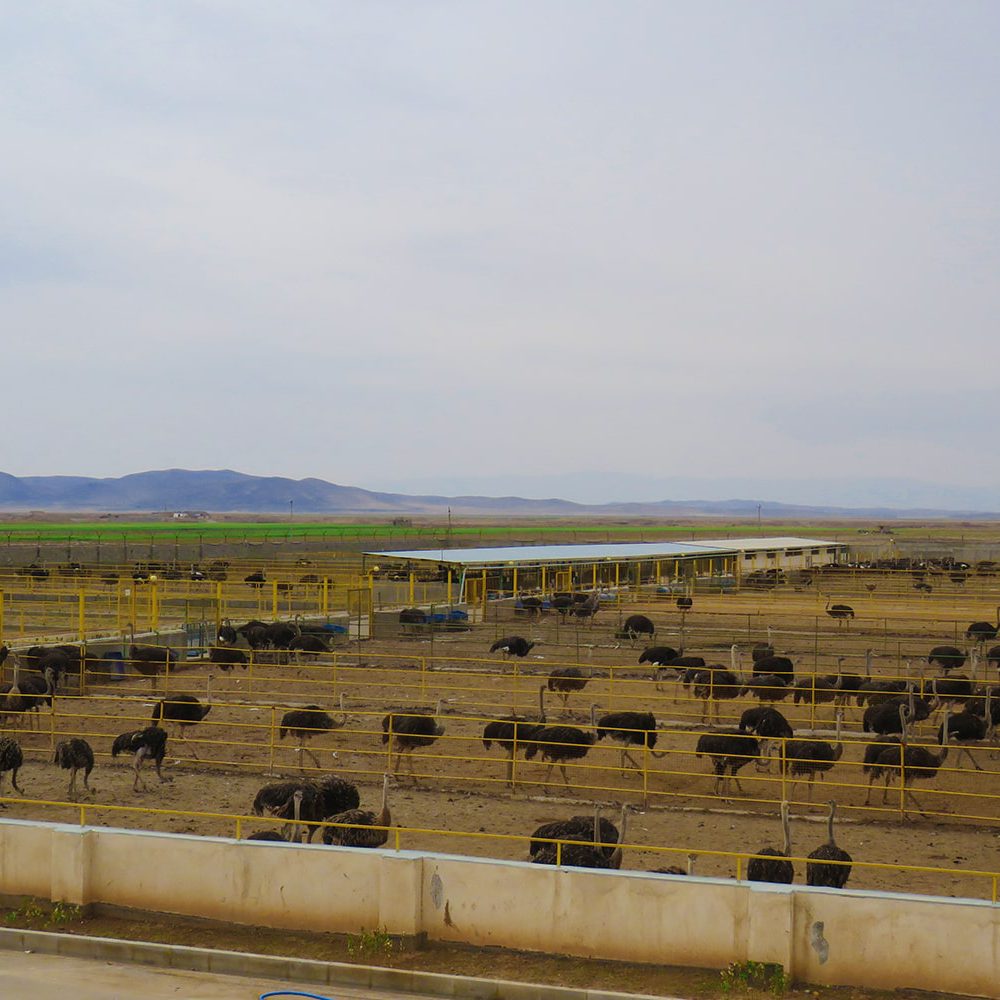
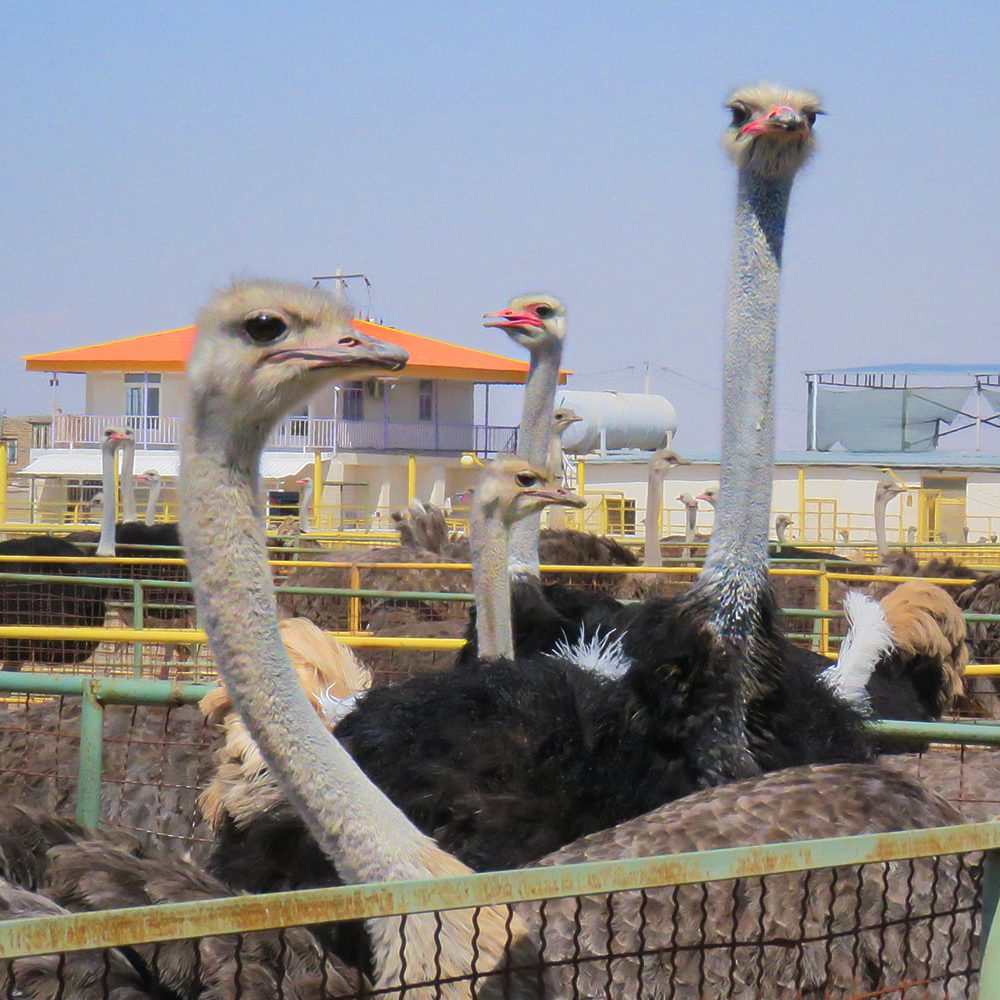
Competitive characteristics of ostrich breeding with other animals and birds:
- Conversion factor: The amount of feed consumption and the resulting weight gain for each ostrich to reach the slaughter weight will consume about 90 kilos in about 300 kilos of feed and the conversion factor of the ostrich is about 2.3 to 4.3 (with Ration and standard conditions (this number is about 2 for broiler, about 8 for sheep and about 16 for cattle).
- Environmental pollution: One of the most unique features of this bird is the non-attraction of insects, especially flies, to ostrich feces. This bird produces 400% less methane gas than cows, which reduces the production of greenhouse gases. Also, in an ostrich farm you will be in complete silence because this bird does not have a larynx to produce sound
- Cost of facilities and labor force:The cost of facilities and labor is low due to very low breeding and the high resistance of ostrich to different temperature and atmospheric conditions. It requires much simpler structures and equipment than other poultry. Also, with basic design and management, a workforce will be able to handle 100 productive pieces or 400 fattening pieces.
- Ability to use roughage and low water consumption:Due to having a special digestive system, unlike chicken and turkey, the ostrich is able to use forage plants. Also, considering the upcoming drought conditions, it should be mentioned that the ostrich has a high resistance to dehydration and consumes an average of 5 to 7 liters of water per day, which makes this industry one of the key industries that require little water.
Breeding ostrich
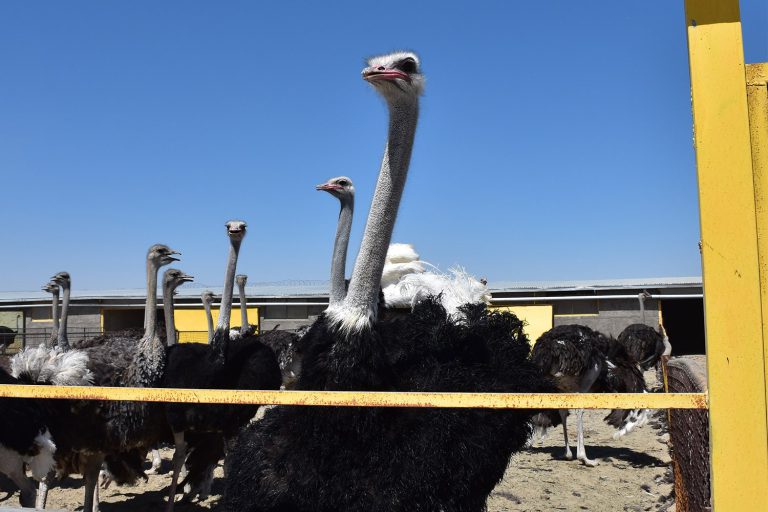
The Minimum Space Required for Breeding Ostriches:
Roofed space: 5x6 meters, open space: 40x6 meters for three production units, including 1 male and 2 female.
Ostrich Feed Ingredients:
including 40% alfalfa, 20% corn, 20% soy bean, 10% wheat bran and 10% concentrate, which consumes about 2.5 kilos per day of this mixed feed. (**Please note: these ingredients are mentioned in general terms, but for better nutrition and breeding conditions for birds, feed ingredients depend on many factors that must be checked by an expert and according to the specific conditions of the ostrich bird, the feed formulation change it and give you the new ration) .
Production Rate:
Each ostrich lays about 50 eggs per year, of which about 15 to 20 become chicks on average.
fattening ostrich
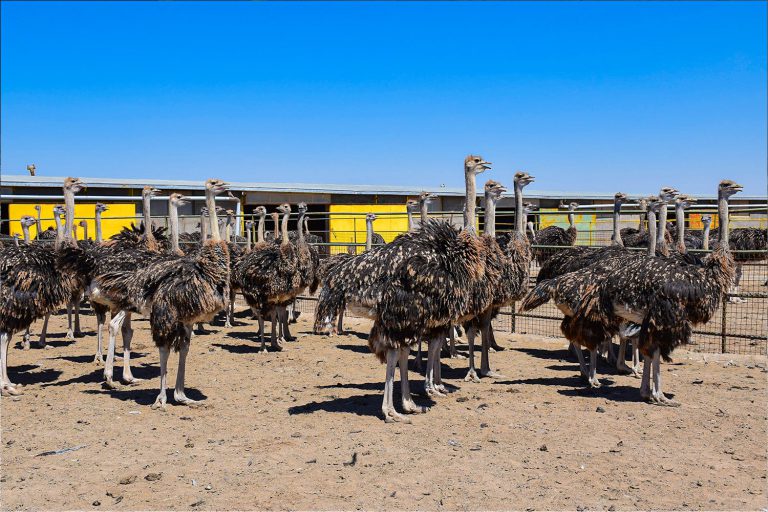
The Minimum Space Required for Breeding Ostriches:
Each fattening ostrich needs 4 meters of covered space and 12 meters of open space.
Amount of feed consumption:
Each bird consumes about 300 kg of feed during the fattening period
Optimum period and weight: :
Each ostrich will reach the ideal weight for slaughter in 7 months, around 85 kg.
Production Rate:
Each ostrich lays about 50 eggs per year, of which about 15 to 20 become chicks on average.
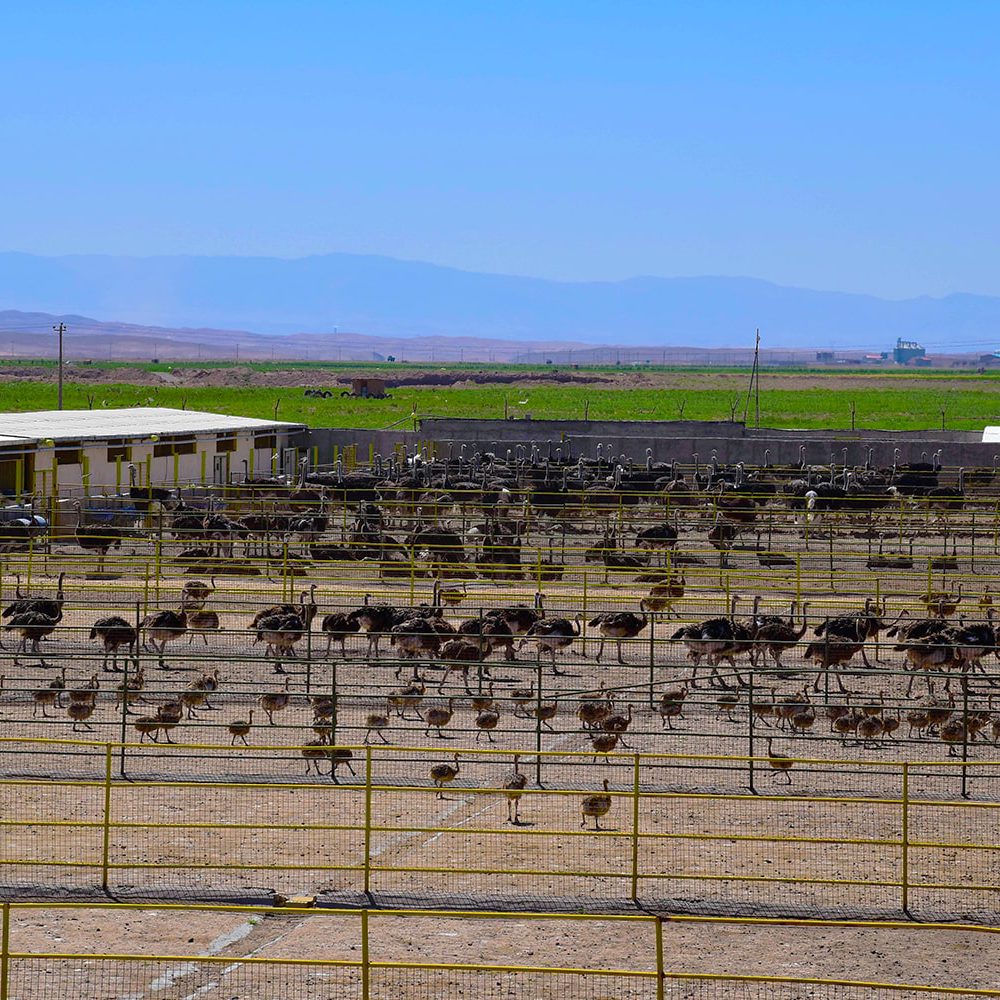
An overview of the production situation and general indicators in ostrich:
- Breeding part: In Iran, ostriches are kept in two ways: flocks and families, each of which has its advantages and disadvantages. For each piece, 40 to 50 square meters of space should be considered, the cost of pine facilities is lower than the benefits and the lack of production management and the high statistics of bird damage and breakage are important disadvantages of this method.. Compared to Article 1, it is 2 or 3. In the form of family formation, each ostrich is usually associated with 2 female ostriches in a space of 8 x 50 meters, and detailed information on the production status of each bird can be collected. In Iran, ostriches produce eggs every year from March to mid-October, and at this time, they consume 2.5 feed per day for the production season. From October to mid-Bahan, production is stopped due to the reduction of day length and weather conditions, at which time each bird receives a diluted ration in terms of energy and protein as a maintenance ration of 2 kilos for each bird.A female ostrich lays an average of 50 eggs per year, of which 35 are fertilized, of which 26 are usually born, and 20 to 22 of them reach the age of one month. (These numbers can increase or decrease depending on the management of the collection and the age of the breeders) The hatching period of the egg from the time it enters the incubator will be about 42 days.
- Fattening part: Ostrich fattening is generally done in flocks with the number of 30 and 50 birds in one space. For each fattening ostrich, about 10 to 15 meters of open space and 4-8 meters of roof space are required, and this space should be If it is completely flat, each bird needs about 6 to 8 months to reach a weight of about 85 kilos, and in this regard, it consumes between 260 and 350 kilos of feed according to the standards and management and the season.Each fattening ostrich gives carcasses about 60% of the live weight at the time of slaughter and produces about 29% of the live weight of boneless meat. The production conditions are based on an 85 kg bird, about 25 kg of pure meat, about 8 kg of fat, about 1,200 kg of fat. A sheet of skin measuring 1.3 square meters. Each of the ostrich products has special features that make it competitive in the sales market for the supplier.
